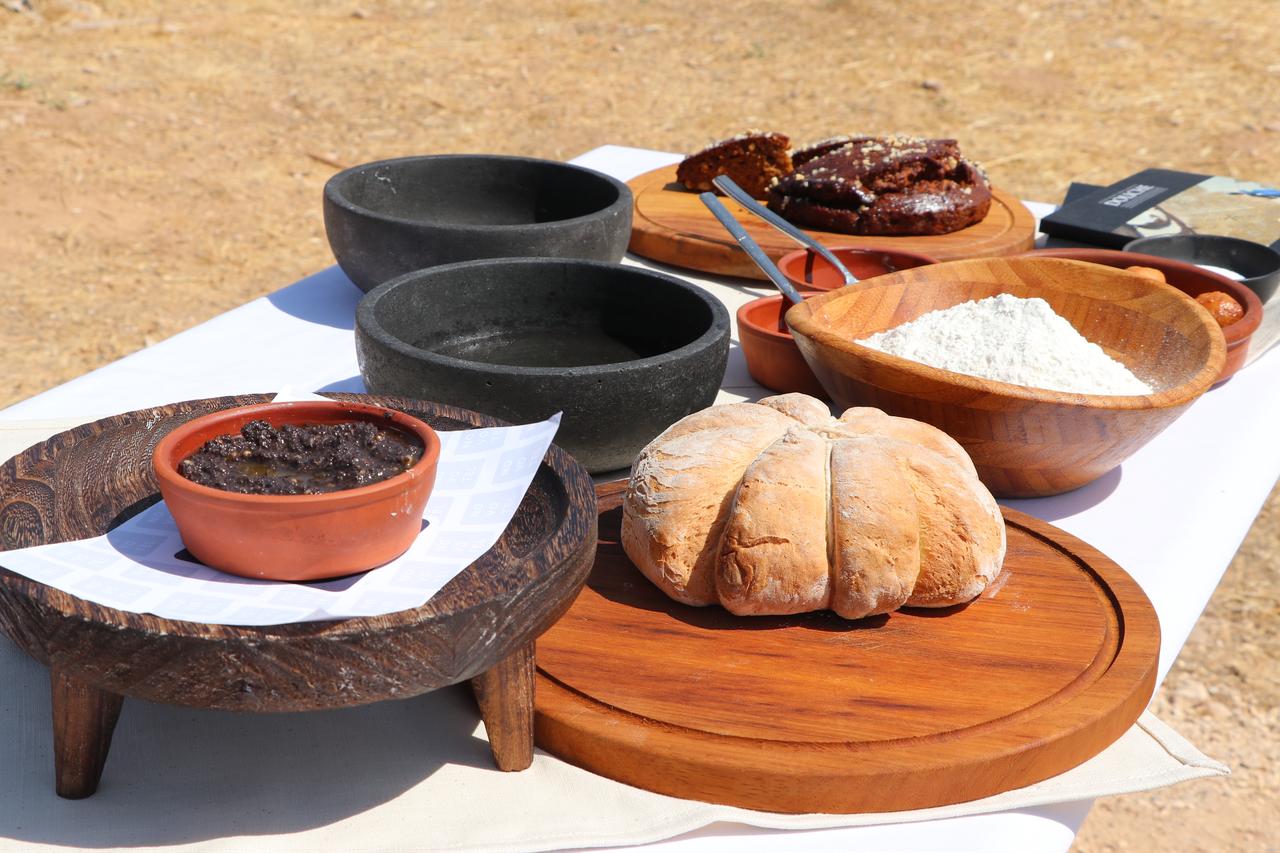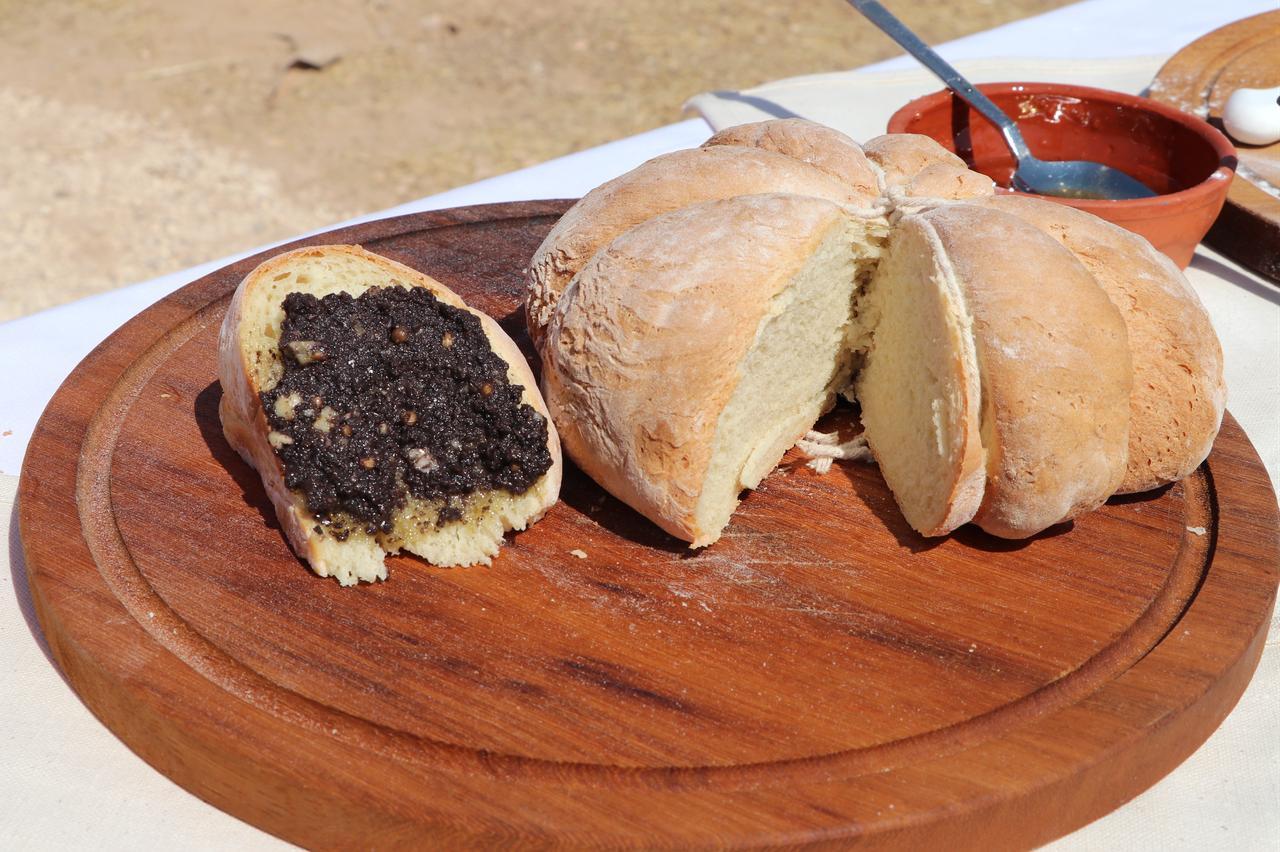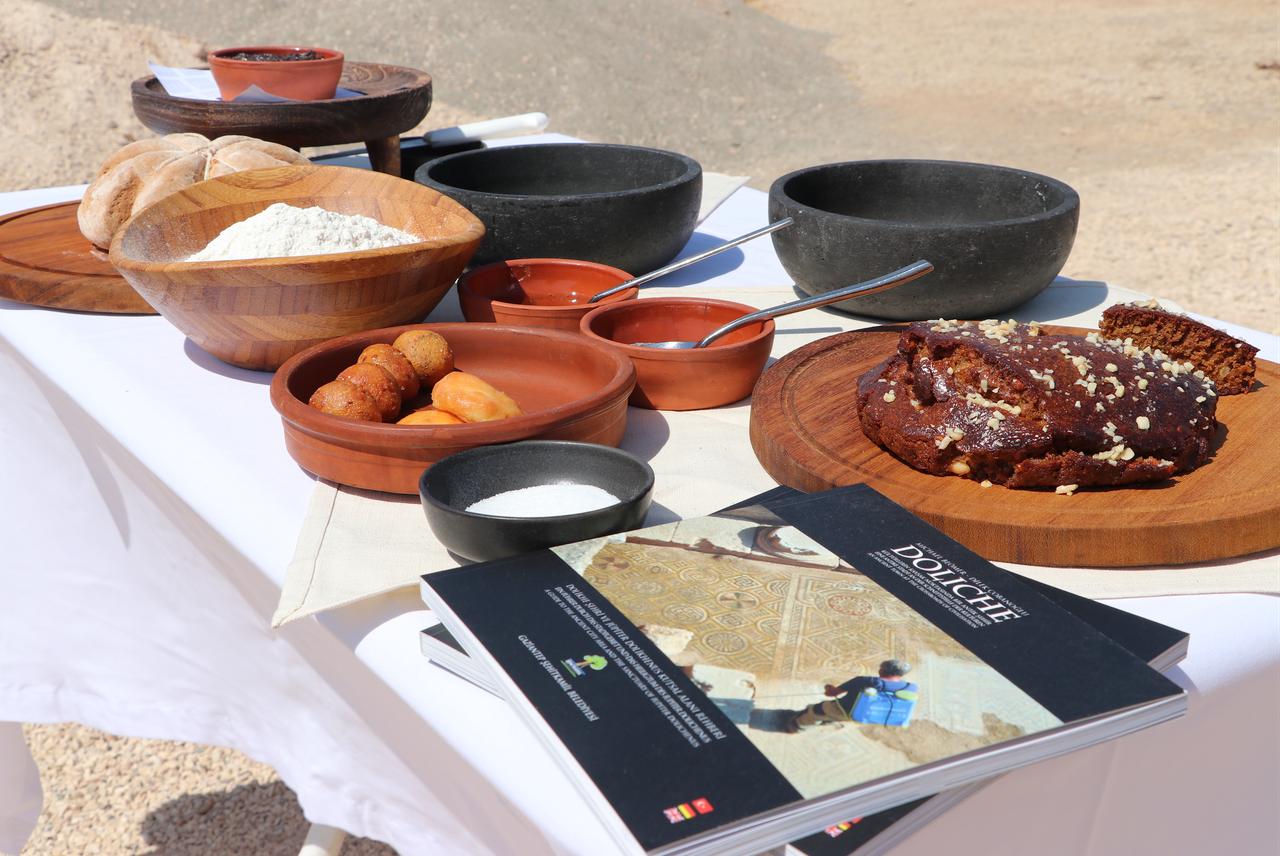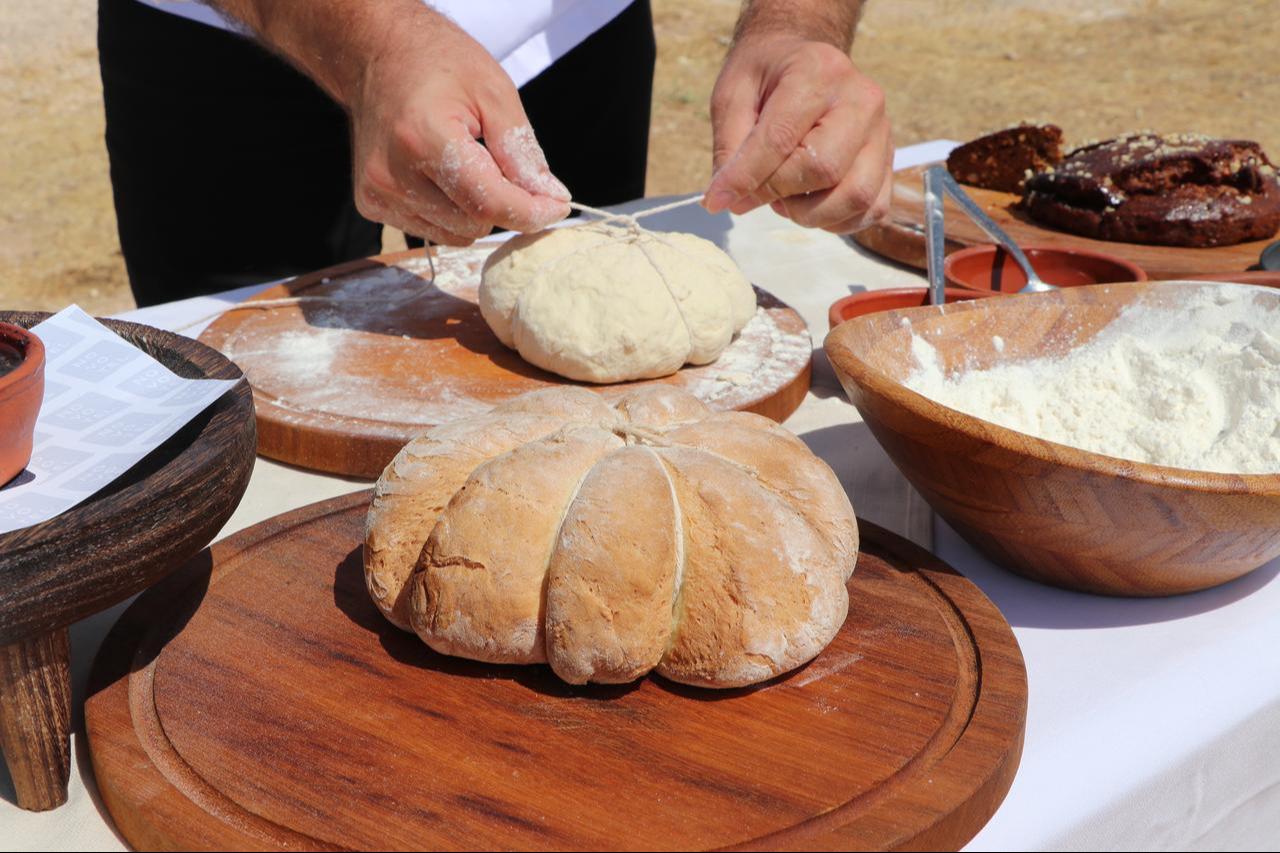
Archaeological excavations at the ancient city of Duluk have uncovered Roman-era food recipes that are now being recreated by master chefs, bringing thousand-year-old culinary traditions back to life for modern visitors to experience.
Ongoing excavation work at Duluk Ancient City in Sehitkamil district, conducted through collaboration between Türkiye's Ministry of Culture and Tourism and Germany's University of Munster, has revealed written and visual artifacts containing recipes for Roman-period foods and bread.
The discovered recipes include Pompeii Bread, Olivatum (Olive Paste), Libum (Honey Cake), Globuli (Honey Cheese Cake), and Dulcia Piperatta (Honey Cake). These ancient formulations have been delivered to master chefs.

The recreated dishes, prepared using identical recipes from antiquity, are being served to citizens at the GastroAntep Cultural Route Festival, organized by Gaziantep Metropolitan Municipality and the Ministry of Culture and Tourism.
Sehitkamil Municipality Mayor Umut Yilmaz stated that Gaziantep is renowned for its regional dishes and gastronomy. Expressing their intention to transfer recipes discovered during excavation work to the present day, Yilmaz said: "We had our Minister of Culture and Tourism taste the bread we prepared last week, these foods from the Roman period. It received tremendous flavor. Allah willing, we want to promote these breads and foods on Gaziantep flights."
"We want whoever comes to Gaziantep from wherever by plane to taste these foods and get to know Duluk in this way," he added.

Yilmaz emphasized that ancient cities' flavors should also be included in Gaziantep gastronomy. Noting that Pompeii bread is a flavor not found anywhere else in Türkiye, Yilmaz stated, "These flavors are the flavors of these lands. We will also include this bread in Gaziantep gastronomy."
"Therefore, everyone who visits here will taste this bread here. We will make promotions with these foods and tell the history of Duluk," he added.
Chef Mutlu Durgun, one of the chefs preparing the thousand-year-old flavors, explained that the dishes were made from ingredients suitable for that period's war conditions, and that they initially tried the recipes many times.
"Our professors gave us the recipe motifs of foods and breads they found in mosaics and inscriptions while conducting excavations. We are making the dishes using exactly those recipes."
"There was no sugar in that period, so we made the desserts with honey. We tried to comply exactly with the original recipes of that period with the support of our professors," Durgun noted.
"After telling our guests who visit Duluk Ancient City about the history of this place, we will teach these recipes to local people and have them mass-produced so that they can have the opportunity to taste desserts and breads from that period before leaving. We want to have people who come here taste these," Durgun said.

Located at the intersection point where trade routes from south, north, east and west extended during ancient times, Duluk Ancient City was situated on the Silk Road route that stretched from Mesopotamia to Cilicia during the Assyrian period and from Antioch and Cilicia to Zeugma during the Hellenistic and Roman periods.
The ancient city dates back thousands of years before Christ and ranks among the world's oldest settlement areas.
In addition to Stone Age artifacts, the ancient city contains works from the Copper Age and the oldest known mathematical operations, with traces also found from the Old Stone Age.
The ancient city, which changed hands between the Hittites, Medes, Assyrians, Persians and Alexander's Empire, carries the knowledge of many civilizations to today through its artifacts and historical structures.
During a period when Mithraic belief was dominant in the city, it housed the world's largest known underground Mithraic temple.